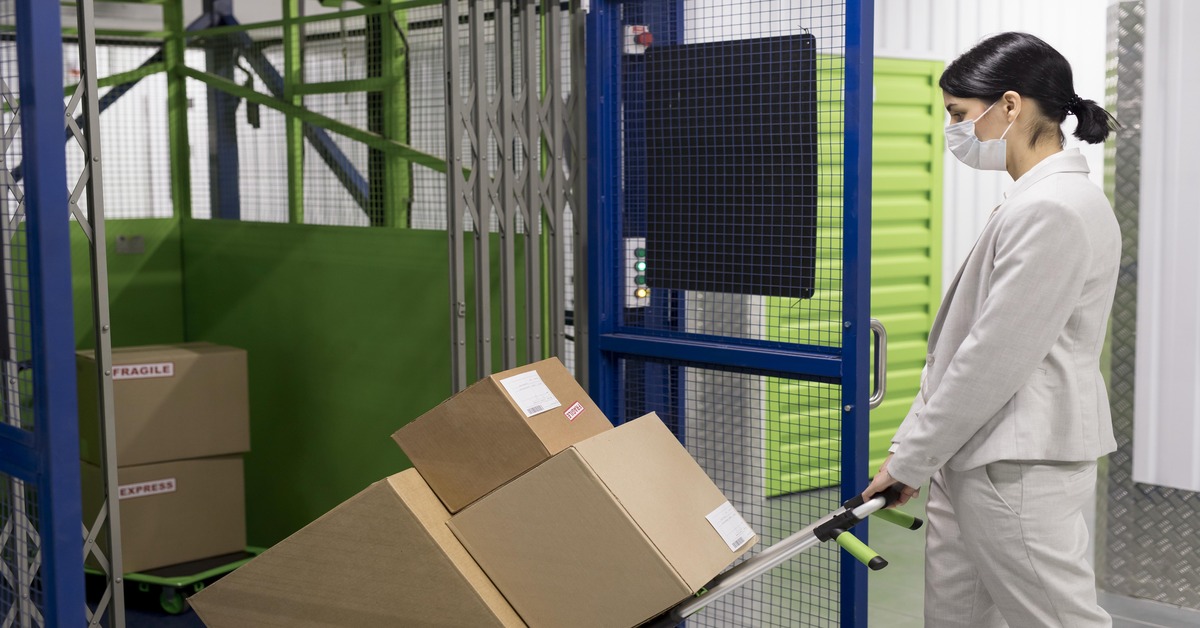Table of Contents
In today’s evolving work landscape, optimizing remote work for your business is crucial. As we embrace a hybrid work culture, it’s essential to create an environment that supports productivity and efficiency, whether employees are at home or in the office. Renovation of your workspace can play a vital role in this transformation, ensuring it meets the new demands of flexibility and connectivity.
Downsizing unnecessary office space can help cut costs and make way for more utility storage solutions, keeping essential items organized and accessible. By integrating these changes, you can enhance your team’s work-from-home experience, streamline operations, and foster a more adaptable and resilient business. Whether you’re implementing new technology, redesigning your office layout, or rethinking your storage needs, these steps will help you navigate the future of work with confidence and success.
Assessing Your Current Remote Work Setup
To optimize remote work for your business, start by assessing your current setup. This involves evaluating the tools and technologies you’re currently using, identifying gaps in communication and collaboration, and gathering employee feedback to gauge satisfaction.
Evaluate Existing Tools and Technologies
First, take a close look at the tools and technologies your team uses daily. Are they effective and up-to-date?
Consider productivity software, communication platforms, project management tools, and cybersecurity measures. Ensure your tools support seamless remote work and provide the necessary features for your team to stay productive and connected.
For instance, popular tools like Slack for communication, Zoom for virtual meetings, and Trello for project management can significantly enhance remote work efficiency.
Identify Gaps in Communication and Collaboration
Are there delays in information sharing? Do team members struggle with staying connected? Communication is the backbone of successful remote work. Evaluate how well your current tools facilitate real-time communication and whether they support collaborative efforts. Look for areas where improvements can be made, such as integrating a more robust video conferencing system or a better file-sharing platform. Ensuring that all team members have access to and are proficient with these tools is essential.
Employee Feedback and Satisfaction
Gathering feedback from your employees is crucial. Conduct surveys or hold virtual meetings to understand their experiences and challenges with remote work. Ask about their satisfaction with current tools, any issues they face, and suggestions for improvement. Employee feedback provides valuable insights into what’s working and what needs adjustment.
Effective Communication Tools for Remote Work
Effective communication is key to optimizing remote work. Implementing the right communication tools and practices can enhance collaboration and ensure your team stays connected.
Choosing the Right Communication Platforms
Choosing the right communication platforms is the first step. Platforms like Microsoft Teams, Slack, and Zoom offer comprehensive features that support both synchronous and asynchronous communication. These tools facilitate instant messaging, video calls, file sharing, and collaborative workspaces.
Setting Up Regular Virtual Meetings
Schedule daily or weekly check-ins to discuss ongoing projects, address any issues, and keep the team connected. Virtual meetings provide a platform for real-time interaction, helping to build rapport and collaboration. Ensure meetings are well-organized, have clear agendas, and respect everyone’s time to keep them productive and engaging.
Ensuring Employee Well-being and Productivity
Ensuring employee well-being and productivity is essential for optimizing remote work for your business.
- Prioritizing mental health – Provide access to counseling services, stress management programs, and virtual wellness workshops. These resources help employees manage their mental health, leading to a happier, more productive workforce.
- Encouraging work-life balance – Remote work can blur the lines between professional and personal life, making it vital to set clear boundaries. Encourage your team to take regular breaks, set specific work hours, and unplug after the workday ends. Flexible schedules can also help employees manage their time more effectively.
- Performance reviews – Schedule weekly or bi-weekly meetings to discuss progress, address concerns, and provide feedback. These check-ins help employees feel supported and valued, fostering a sense of connection even when working remotely.
Measuring and Improving Remote Work Performance
To ensure your remote work strategy is effective, it’s crucial to measure and improve performance continuously.
- Start by setting clear goals and KPIs (Key Performance Indicators).
- Define specific, measurable objectives for your team, such as project deadlines, productivity targets, and quality standards.
- Using analytics to track productivity is another essential step.
- Employ tools and software that monitor work progress, time management, and output. Platforms like Asana, Trello, and Microsoft Teams offer valuable insights.
- Continuous improvement and feedback loops are vital for maintaining high performance.
- Schedule regular check-ins and performance reviews to discuss progress, address challenges, and provide constructive feedback.
By focusing on these strategies, you can optimize remote work performance, boost productivity, and ensure your business remains agile and competitive. Remember, the key to success in remote work is continuous adaptation and a commitment to excellence.
Final Words
Optimizing remote work for your business involves several key strategies. First, assess your current setup and implement effective communication tools to enhance team collaboration. Creating a productive home office environment with ergonomic and utility storage solutions is crucial. Integrating a hybrid work culture by balancing remote and in-office work helps maintain flexibility and team cohesion. Office renovation and downsizing can maximize space and resources, supporting the hybrid model. Leveraging technology and ensuring employee well-being are essential for maintaining productivity and morale.
Adapting to these changes and staying flexible will help your business thrive in the evolving work landscape. Remote work is here to stay, and embracing it can lead to increased efficiency and employee satisfaction.
FAQs
A: Remote work lowers costs, boosts productivity by allowing flexible schedules, and expands talent options globally.
A: Essential tools include communication platforms like Slack, project management tools such as Asana, and video conferencing software like Zoom.
A: Ensure clear communication by setting guidelines, scheduling regular meetings, and using collaborative platforms for sharing information.
A: Effective strategies include setting clear goals, providing regular feedback, fostering trust, and promoting work-life balance.
A: Maintain morale by organizing virtual team activities, recognizing achievements, and encouraging open communication channels.
A: Address challenges like isolation and distractions by promoting social interactions, improving communication tools, and offering support.
A: Secure data by implementing access controls, using communication channels, and educating employees on cybersecurity practices.
A: Best practices include setting priorities, creating a conducive workspace, managing time effectively, and avoiding multitasking.
A: Foster culture by organizing virtual events, reinforcing core values, and encouraging team collaboration and support.
A: Future trends include hybrid work models, increased automation, and a focus on employee well-being.
 Contact Us
Contact Us
Our Storage experts will get in touch with you.





